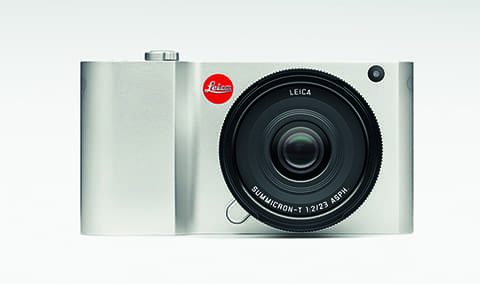In an interview with Amateur Photographer (AP) at Leica’s new base in Wetzlar, Germany, Daniel said: ‘We are convinced that smaller than full frame has a “reason to be” because you not only have to look at camera size, but at the size of the whole system.
‘It’s a fact that APS-C-type lenses can be made much smaller – with great performance – than [for] autofocus full-frame… And this is something people don’t really consider when they say, “It needs to be full frame”.
‘Whether for mirrorless or DSLR cameras, [full-frame lenses] are quite are heavy and big and we wanted to create a system that you really want to carry around.
‘You can achieve very nice image quality with smaller than full-frame, so that was the reason why we choose APS-C. Also, we wanted to target another price point than our M.’
Leica says it is notching up ‘very nice’ orders for the Leica T, which has only just gone on sale after being announced last month. So far, it has been well received, says Daniel.
Asked why Leica did not opt for a hybrid AF system with phase detection, Daniel said: ‘We said, “Let’s stick to the proven technology that we have experienced with our X Vario [digital compact].”
‘It was a natural approach to use this existing platform, and the proven sensor and autofocus algorithms.’
Though he sees room for improvement, in terms of AF speed for example, Daniel points out that phase detection is only one way to achieve this.

Daniel confirmed that Sony supplied the Leica T imaging sensor.
‘It’s a proven workhorse, the 16-million-pixel APS-C – one of the best you can find right now.’
So, when can we expect the second model in the T family?
‘This camera is only four weeks old, so it’s a little early to talk about a successor, but we know it won’t last for ever.’
Daniel explained that the camera body is polished at its plant in Porto, Portugal, for two reasons:
Firstly, the new factory in Wetzlar, Germany, does not have the heavy mechanical workshop required.
Secondly, and a ‘big advantage’, is that manpower in this part of Portugal is not only skilled – with a ‘feel for precision’ gained from the region’s watch-making industry – but cheaper too.
Leica will not reveal the name of the partner it uses to make the Leica T’s lenses in Japan, but we know it is not Panasonic.
Asked if Leica’s relationship with Panasonic remains unchanged, Daniel replied: ‘We have been working together with Panasonic since 2001 and we are quite happy with that. Over time they have become good partners…’
Read AP’s interview with Leica’s CEO here

Leica Camera AG product manager Stefan Daniel







